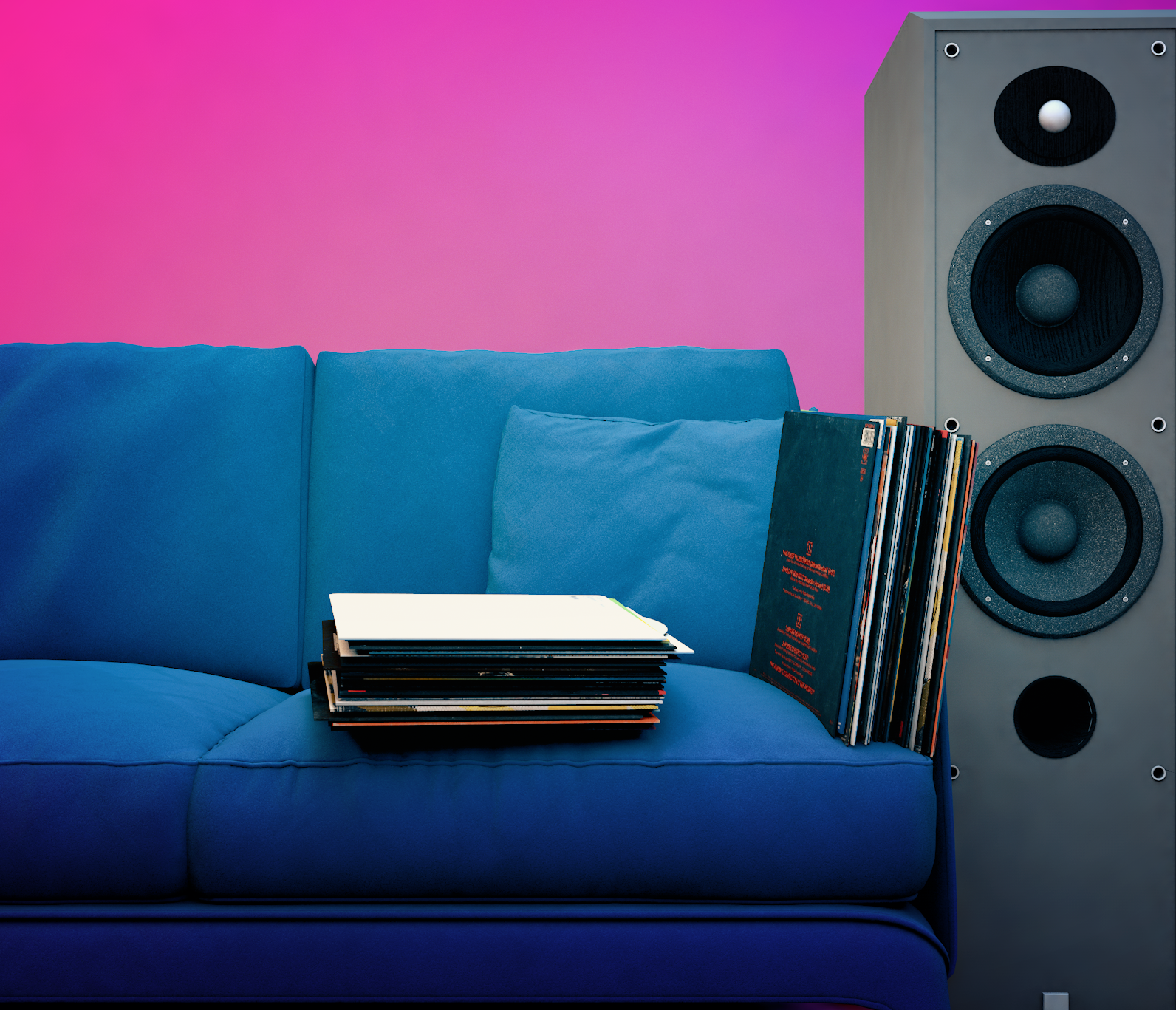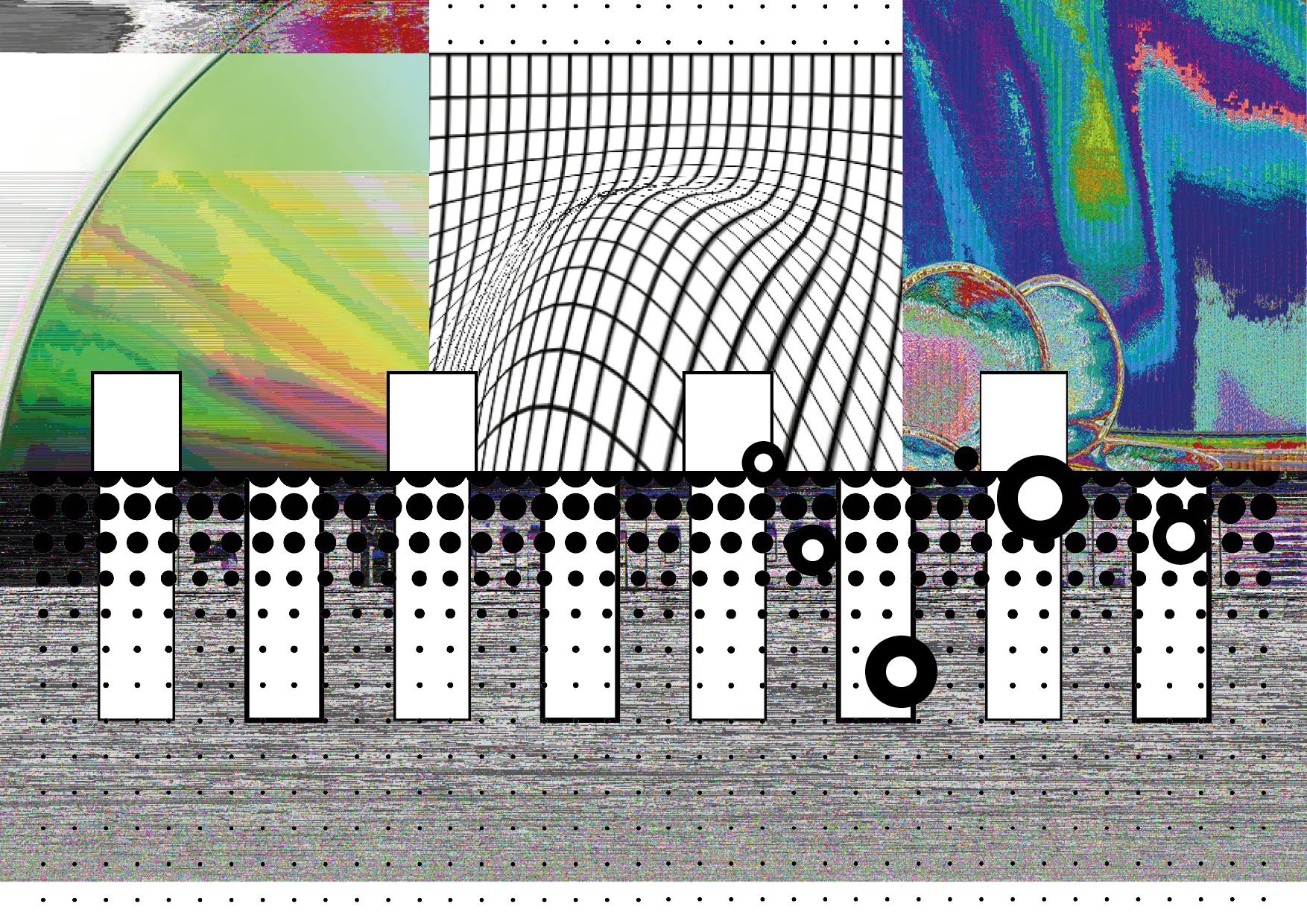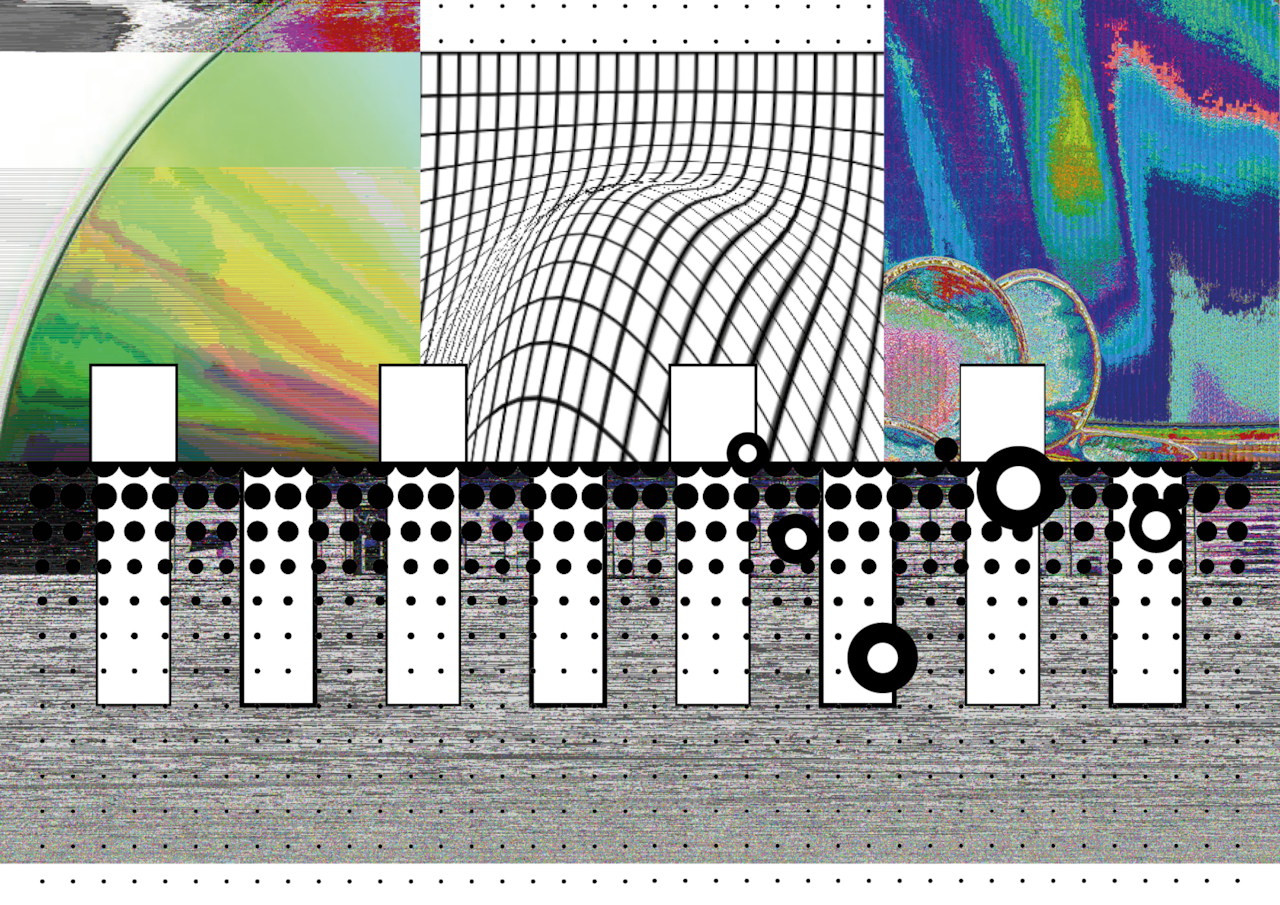
Modern Approaches: Distortion
Distortion is powerful. Distortion commands attention. As one particularly insightful contributor below points out, distortion has historically had the ability to reinvent familiar sounds and define entire genres. Even the most inattentive listener can recognize distortion: it breaks through the speakers, transforming pedestrian tones into forcible bursts of audio.
Stated simply, distortion is the sound achieved by overloading a component within an audio chain. Whether it’s sending a signal that’s too hot into a microphone preamp, driving the gain on a piece of hardware far beyond its comfort zone or simply turning one’s amp up to 11, distorting a signal can add a new layer of complexity and intensity to a sound.
Essentially, this is because overdriving an audio component causes clipping. That is, an audio signal’s normally round waveform is forced to square off, or clip, resulting in added sustain as well as the addition of both harmonic and inharmonic overtones to the signal. The way in which different components clip, and the nature of the harmonic and inharmonic overtones created as a result, are what give each piece of equipment their own unique distortion characteristics, and why certain pieces are sought out to add “fuzz,” others to add “grit” and some to make a signal almost completely unrecognizable. But distortion can also be equally as effective when used in smaller doses. A subtle, almost imperceptible distortion of a signal can be used to bring out certain elements in a mix or to add an extra edge to a sound without pushing it overboard.
The many ways in which one can create and utilize distortion is likely why it has proven such an effective tool for so many producers and why distortion – in one form or another – is prevalent across so many genres of modern music. With the possibilities of how and when to use distortion appearing to be virtually limitless, Modern Approaches has again tracked down a number of knowledgeable artists to share some insight into the ways they each achieve and make use of distorted signals.
Guy Andrews
(London - Houndstooth, Hemlock)
There isn’t really one set way of how I will distort a signal – my methods differ based on the audio source I’m trying to manipulate. Simple monophonic sounds generated by a synthesiser often lend themselves well to being passed through a guitar distortion pedal (such as a Big Muff), while sounds with constantly varying harmonics (such as field recordings), which also often have a higher signal-to-noise ratio, may require more precise digital distortion. In those cases, using something like FXpansion’s Etch plug-in can work really well as it combines distortion with different filter types.
One of my main methods for creating distortion is to send a signal to multiple buss channels, all separately EQ’d to a set frequency range, so that I can apply different types of distortion to certain sections of the frequency spectrum. This method really helps to maintain the original sound’s tonal qualities, and I like being able to keep the sound’s main channel intact and work with it in parallel to the multi-band processing. Correct gain staging at this point is really vital, and often you can encounter phase cancellation issues, so I’m constantly inverting the phase of channels to see what sounds best. I will also sometimes re-amp signals digitally via guitar amp-modelling software. Amp reverbs can work really well to provide more perceived stereo and tonal movement within distorted sounds. I find that cleaner mono signals work best for heavy distortion, and I’ll then widen the stereo image with reverbs towards the end of the signal chain.
I will always warm up kick drums and sub-bass with distortion to varying degrees, but pretty much everything you hear on my records has been run through some kind of distortion or saturation. Strings, guitars, percussion – it all has to fit into a similar aesthetic, and the distortion helps define that – but it’s actually more common for me to use very subtle distortion on tracks, despite what might be immediately obvious to listeners. Distorting elements such as strings and sustained pad sounds can help increase the presence of these sounds in a mix when the processing is only applied fractionally to the top end of the frequency spectrum. Most of the time, I will use very small amounts of harmonic distortion, as the additional harmonics introduced will prevent the sounds from being buried within the mix.
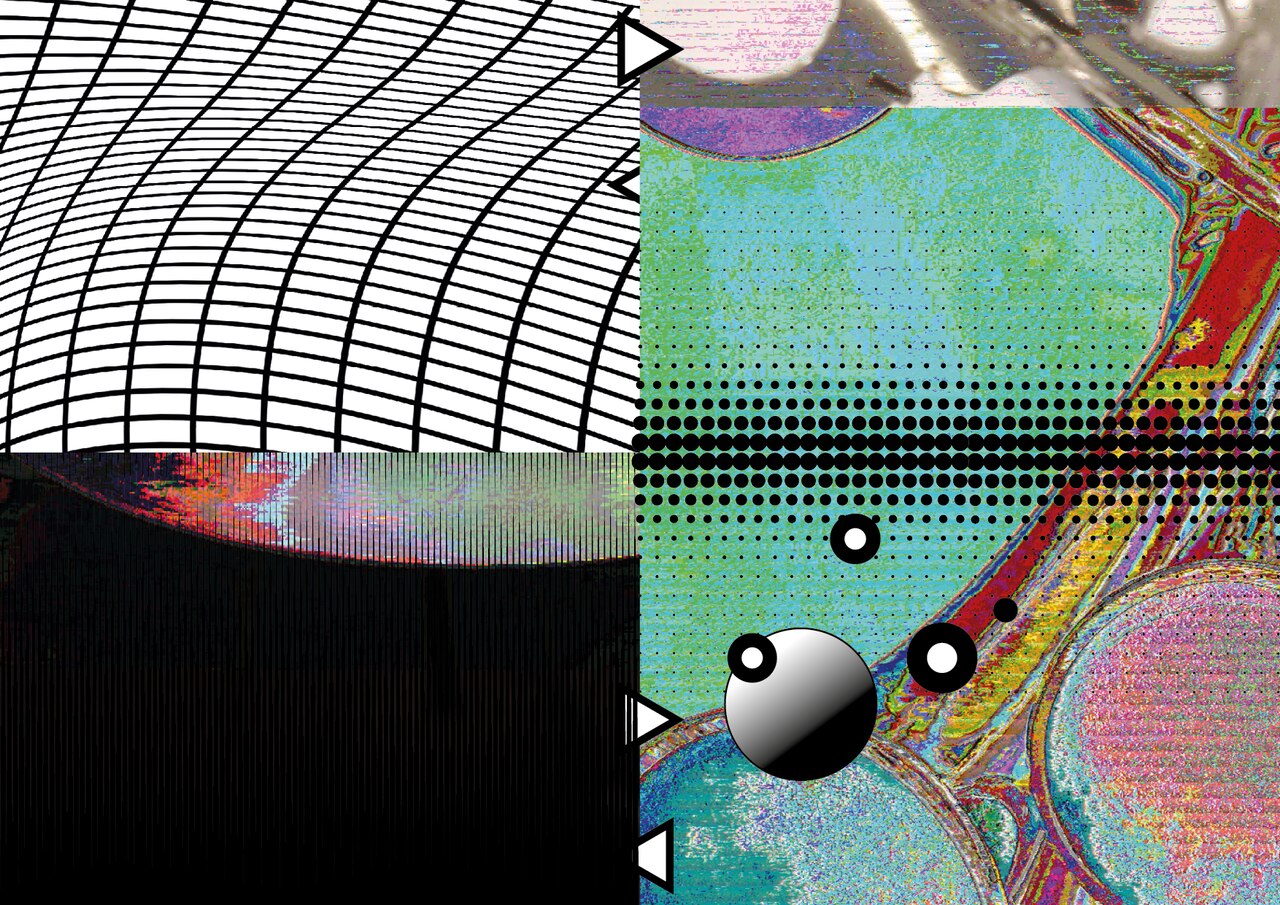
Russell E.L. Butler
(Oakland - Opal Tapes, Jacktone)
I was first pulled in by distortion when I heard Siamese Dream by the Smashing Pumpkins (around the age of eight or nine). It destroyed every notion of what I thought music was or could be at that time. Distortion got me hooked really young. When I started to play electric guitar, my dad introduced me to Jimi Hendrix and I could finally identify what created those sounds. Jimi’s approach to distortion in a way led me to synthesis: here you have this controlled system that is overloaded past its capability to create cacophonous, sensual noise. Jimi’s use of this effect, especially later in his career, illustrated emotional complexity and spiritual devotion, sculpted by sustained, overdriven notes. Distortion brings an overwhelming intensity, a demand to be heard and felt. Distortion is my spiritual home.
I’m a live performer and my recording practice is centered around documenting these performances. Distortion is a very “live” effect: it can be unpredictable and in your face, like a live performance. My preferred means of distortion is the Way Huge Swollen Pickle Fuzz pedal (an infuriating name, but, alas, this conversation is about distortion and not patriarchy). I use that pedal primarily on drum machines these days, and you can hear it all over my Constructions tape, especially on “Jackdist 6 5 14finalbounce.” I use the Octatrack a lot, but my traditional drum machine of choice is actually the Roland TR 606 – when you run it through distortion you get the most incredible snare sound, super full and tough. The hi-hats devolve into corroded metal – I just love it. I also use a synth module by Intellijel called the HexVCA to get distorted tones. It is comprised of six voltage-controlled amplifiers that can overdrive and get great distortion; I love throwing acid lines into and distorting them heavily.
When I use distortion in the mix phase, it is either to group sounds together in the same space or to add more presence to other sounds. You can hear how the drums are grouped together on a track like “Euro Octajunk 7 8 14bouncefrom” or “SH101 606 6 1 14bounce” (also from my Constructions tape), where I used distortion to bring out the snare. For me, distortion really glues all of the elements together in an extra warm and fuzzy way, and more recently, I’ve jumped to distortion if I’m having difficulties with certain mid-range sounds in my mix. On my 12" for Black Opal, The First Step, I mostly used distortion to add presence to the drums. Beyond that, each of the tracks on the The First Step were recorded live to a stereo cassette deck (I then did some compression, EQ, and added effects in Logic after that). Cassettes are another great way to add more subtle or very active distortion to a mix.
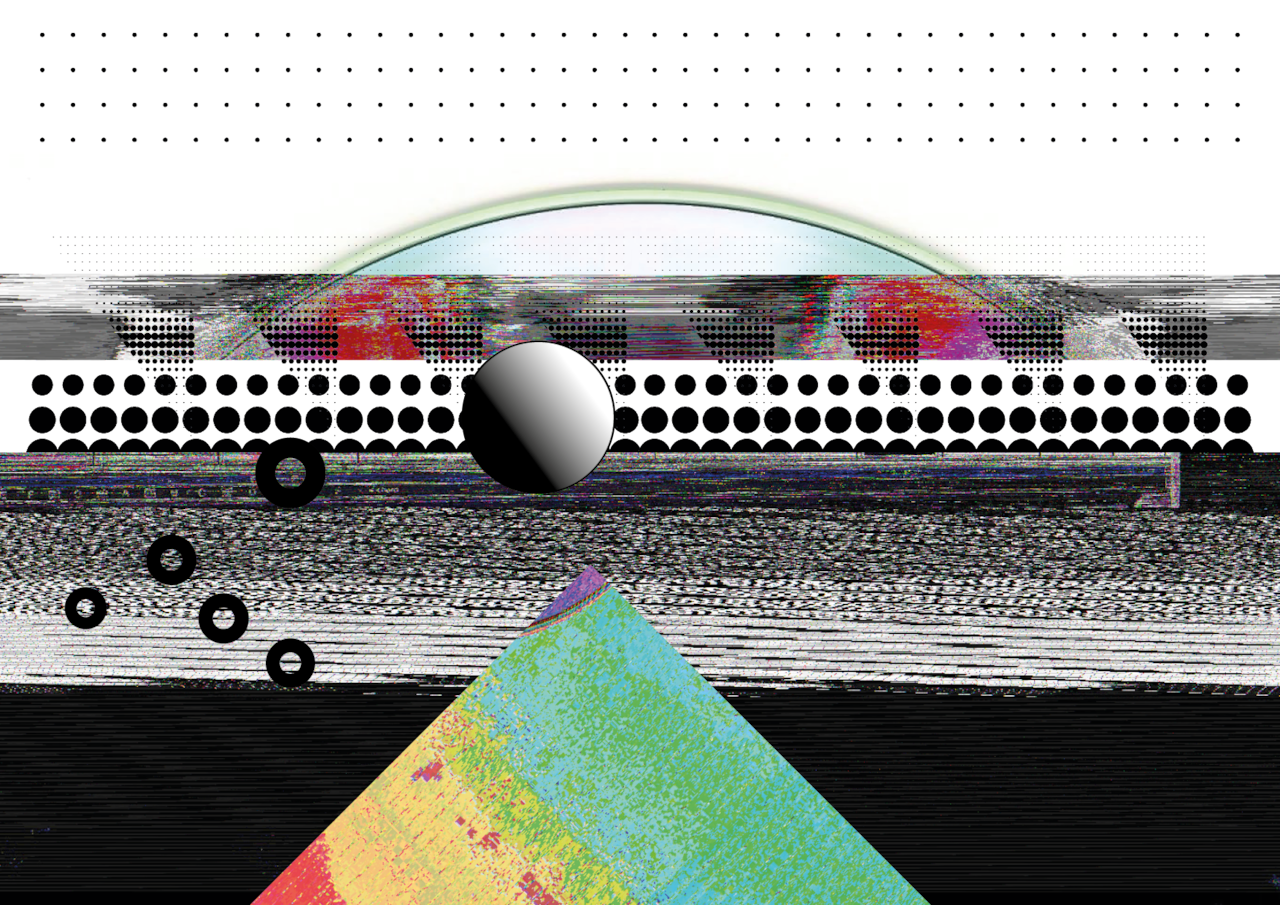
The Cyclist
(Birmingham - All City, Tape Throb)
With everything I work on, I distort it in one way or another. I love to use a mixture of both analog tape distortion and software that imitates tape distortion. From the first stage to my mixdown, I’m mangling things beyond repair. I like to think of it as anti-production: fuck their way of what sounds good and what doesn’t, do it your own way, especially if it’ll have people going “Great music, but is it supposed to sound like that?” That’s the response I want.
With my basslines, I love to add extra overtones with overdriven tape delay and then blast that with tape distortion for a proper warping bassline (tons of phaser/flanger/various reverbs will also be applied). I like to do the same with my synths as well. I also love blasting my drums to the next level, so that they become a shadow of their former self; analog and digital drums, real-world samples and found sound rhythmics all get the same ravaged taped/tubed/digitized treatment. Using samples that are already wrecked (things from really old recordings, cassette mixes/VHS tapes, or even lo-fi digital recordings, like from early digital video) is something I’ll do, too.
I think distortion adds an obvious unpredictability [to a production], but I also like to think that it can add extra emotion and excitement. Think of garage bands like the Sonics, who would have sounded very mediocre minus their distortion and their “wrong” way of recording everything at the time. Those garage bands and the punks used distortion on older rock sounds to bring new emotion and excitement to the music, just like people are now doing with dance music. Listen to how a cassette-fuzzed Steve “Silk” Hurley WBMX mix from 1984 sounds so twisted out and exciting. With dance music, distortion can push certain sounds really out there. There were many early house and techno tunes that were distorted unintentionally and that sound all the better for it. For example, Phuture’s “Acid Tracks,” is definitely being pushed into the red throughout; listen to the last few seconds as the drums fade out and lose their distorted edge. The track would not have been as anthemic minus the distortion.
Hodge
(Bristol - Berceuse Heroique, Livity Sound)
I’m always changing my process, but at the moment, running my desk (a Mackie Onyx 1640i) into the red is my favorite way to create distortion. Recently, I’ve also been setting up a channel on the desk as a send that goes to as many pedals as I can find, and then I will group a few sounds in Ableton, EQ the bass out from the group, and run them all to that send and just switch certain sounds off and on to see what combination sounds interesting. When I’m creating sounds, I tend to have a go at running everything through distortion and then tame them and rein it back in after. Too much distortion on everything will obviously stop any single sound from standing out on its own, but I like to use distortion to make certain elements sound different from the rest of the mix. For instance, I always run the strings from the Korg Triton through distortion pedals when I’m using them as it brings them alive; “Forms of Life” was basically me just getting really into overdriving the Triton’s strings and vox patches – I love those sounds.
I’ve got a couple of guitar pedals that I’ll use, and will pretty much always run synths through them before anything else for some drive and compression. I’ve found that just doubling stuff up can give sounds an extra depth, and is a great example of how distortion can be used in a more subtle way. Another technique is to run a whole track through distortion to give it some drive, which can bring certain tracks completely alive, or you can double it up with the original and have the distorted version quietly in the background to give the whole track a new sound.
Distortion is fun, but like most things, that’s because I don't really know what I’m doing with it – I’m just making a bunch of noises until something sounds good and gets me excited about making a track. Most things I do are probably terrible studio practices, but I don’t care. As long as things sound good and are exciting that’s all that matters to me.
Egyptrixx
(Toronto - Halocline Trance, Night Slugs)
Distortion, or harmonic saturation, is one of those universal techniques that can be used and created in so many different ways. I tend to do a lot of it with analog techniques, using pedals like the MXR Blue Box, the Fet Driver or the Big Muff, and I also have a Earthquaker Devices Bit Commander that I use a lot. In the last few years, I’ve been doing a lot of re-amping (especially of synth sounds) through Orange and Hughes & Kettner tube amplifiers, which I will run fairly hot. In my Eurorack modular setup, I have a Pittsburgh DNA Symbiotic Waves oscillator, which is essentially a digital dual-waveform processor that can create really interesting types of digi-distortion (I use this a lot on the work I do as Ceramic TL). I also like using pitch-shifting in really grotesque ways to distort sounds, and I’ll use any sampler or even pitch-shift plug-ins to do that.
Beyond that, I will use the standard plugins (UA, Wavs, Soundtoys) and hardware preamps (UA 610, API 512c) to color and saturate sounds on the way in. Currently, I’m really into running glassy/synthetic/plastic-sounding digital synths through analog distortion, like running the Yamaha JD-800 through a guitar amp or distortion pedal, which can be heard on a track like “This Looks Just Like It, The Answer To My Prayers - I Thought My Life…”
Most of my distortion use is quite subtle and used across the mix on any and all elements. I’ll use saturation to glue a lot of sounds together and to make a mix cohesive and then more aggressively on certain elements I want to jump out of a mix. I tend to gravitate towards a lot of pure, pulse-y, sine wave-type sounds which usually benefit from subtle harmonic layering. Especially lower frequency sounds (as in, those below 80 hz), which can disappear if kept really clean in a mix, I’ll add some color so those sounds hit in the higher registers.
Fennesz
(Vienna - Editions Mego, Touch)
I have a custom-made distortion box that someone made for me called “Masterdistortion” (only a few have been made, and I heard Kraftwerk owns one, too). It’s all handmade, based on early ’70s germanium transistors, and can produce a huge sound. But can also do very subtle things as well. On “Transit,” from my 2004 album Venice, all the sounds except David Sylvian’s vocals and the synthetic strings were done using the Masterdistortion box. Besides that, I also use old Boss and MXR distortion pedals as well as lots of software plug-ins to create distortion; whatever works for a track is fine.
Obviously, I mostly use distortion on guitars, but it can be used with anything. Distortion can add intensity, even atomisation to a sound. I like using distortion on string instruments, even pianos. The distortion on the piano for “Becs” was from a plug-in, for example, while “A Year in a Minute” from my Endless Summer album was a mix of strings, orga, and guitars going into a [Pro Co] Rat pedal. I always add distortion while mixing, as it seems to add another dimension to a composition. I especially like the nebulisation effect you get when using distortion on the aux buss of the mixer: distortion into delay into reverb.
Lesley Flanigan
(New York - Physical Editions)
A lot of the concepts and the general effect of noise and distortion can be similar – when people hear “distortion” they think “noise,” or vice-versa – but I think that they are different. All of my sounds emerge out of this idea of noise and the materiality of the sound of noise, whereas distortion is kind of degrading something, breaking apart something that exists. That said, in my performances I think about creating the effect of distortion through noise and burying my sound in noise, but it’s not really the same thing technically as applying distortion.
The most I do as far as literally distorting the noise that I am performing with, is that at times I’ll have what is a very beautiful and clean tonal sound of a feedback pitch from one of the small speakers I’ve built and a feedback pitch from my voice. I’ll layer them on top of one another while adding lots of harmonies and stuff like that, but the more I continue to bury those sounds underneath so many layers, it starts to become a wash of sound with noises layered on top of each other to the point where the original signal is buried. That’s a distortion process of overlayering.
When I first started all this work, one of the things I really was interested in was just the idea of amplification and how we sound through different speakers. Essentially, if you are going to amplify your voice or an instrument, it is going to sound completely different if you are playing it through some beautiful Meyer Sound PA system versus playing it through some really shitty got-it-for-$80 off the street system, or a tape recorder, or something like that. I’m not necessarily saying that this is a profound concept, but I was very moved by the idea that there is always a duet between you and the speaker/amplification system that you are using.
Gut Nose
(New York - Styles Upon Styles, Cult Trip)
Sending a hot signal or overdriving the input on my AKAI S950 sampler works great for creating distortion (those old low-bit samplers add their own flavor and can make sounds from different sources gel with each other when they otherwise wouldn’t). I’ll then sample hits from the 950 into the MPC, and from there, I’ll have an output going to a OTO Biscuit [FX processor] and then into a mixer, console or a small Mackie. Each device in the chain has its own gain characteristics, so I’ll just experiment with the volume levels, and since the MPC has multiple tracks and outputs, I can decide what to do to each sound – the option to distort any element is always there. A lot of the distortion in my tracks just comes from playing with the levels in the signal chain and finding out what sounds pleasing in the red.
I like my drums heavy (I’ve witnessed the drive knob on a kick drum make people in the crowd move accordingly to the intensity of the kick, but I’ve also observed the harsh, piercing noise-type stuff clear the floor), so I’ll usually get the sound I’m looking for with good source material and run that hot into an old sampler (though, at some point, all sounds beyond drums get run through the gauntlet – some become unrecognizable, and others make it out with barely a scratch). For example, I’ve got this Casio toy keyboard and it has stock drums that sound decent, but lack authority. To remedy that, I played the Casio’s rock drum pattern and ran the output into a Strymon Deco pedal and a SP-303 in vinyl mode, and sampled that into the S950. The process of doing that transformed those bland drums into a thunderous groove that will be utilized in future works for sure.
Hieroglyphic Being
(Chicago - Mathematics, RVNG Intl.)
Distortion first stood out to me on records from Coil, DAF AKA Deutsch Amerikanische Freundschaft, Throbbing Gristle and early Sun Ra records from the early ’60s. But at the time, I didn’t realize or see it as distortion, just part of the artist’s musical experience and expression.
I really don’t use that many distortion processes in my sound creation, really only when I do special side projects under I.B.M., or one-off noise/avant-garde commissioned works. It all depends on what I’m feeling as Human first at the moment, and not dependent on the machines to set the tone. I only apply distortion in the moment if the feeling is right and the emotional energy can be translated properly.
Roly Porter
(London - TriAngle, Subtext)
For me, there really isn’t a simple, go-to piece of kit or signal chain that I always use for distortion. Firstly, the tone or type of distortion that someone could be trying to achieve is always personal, and secondly, every sound reacts differently to being processed. You might play a kick through some pedals and get the perfectly full, tearing sound you want, and then come back and try the exact same thing a week later with a different kick drum and just get some limp, broken-sounding crap.
Having said that, I do have my favorite bits of kit. The Sherman Filterbank has given me years of service and is still something I reach for at least once a week – for that kind of full-frequency power, it can’t be beaten. My favorite pedals are probably made by Death By Audio, especially the Interstellar Overdrive Deluxe pedal; but then sometimes you can get incredible results from some standard £50 Boss pedal.
I used to try to avoid software, but there are plenty of usable sounds that can only be achieved with digital distortion, and I have been using Ohm Force’s Ohmicide and the iZotope Trash plug-ins a bit more recently. The main thing is to experiment and never stop trying new things, and it’s definitely not always about cost. I’ve got a cheap and nasty Doepfer Envelope Follower module that sounds amazing when it’s cranked up (and is only £30 on eBay). It’s also usually a long process for me, so rarely are any of my sounds the result of a single process or recording.
Often when you begin experimenting with a sound, the layers of distortion can bring out characteristics or harmonics that you didn’t notice, and this is often the start of my writing process – to be inspired by hidden ideas in a sound. (Even the simplest sounds can be full and beautiful when they are driven, look at Emptyset.) There are certain sounds that I don’t want to hear distorted on a system (for example, choirs or mid-to-high strings), but that’s because my ears aren’t great anymore and I find it uncomfortable, or I might just want to retain as much of the original character of the recording as possible. I’ll distort most everything to some extent, but I do it in an attempt to try to find the power and intensity in a sound, not to cause pain.
I’ll use distortion when trying to improve software strings, or using soft strings to fill out recordings, but it is almost impossible to hear, just enough to give it some movement. Especially as I get older, I think I’ve become more patient in the studio and have started to realize the value of subtlety in mixing. I remember when I first had a go on a Thermionic Culture Vulture tube distortion a few years ago, I had been super excited to give it a go and then was massively disappointed when it didn’t immediately drive everything insane. It was only after someone more patient and experienced showed me some subtle approaches to using it that I realized the importance of that kind of approach.
Trying to match the weight of what I can imagine with what I produce is a lifelong mission, and distortion is a key element of that. There are certain types of noise, distortion, and string combinations that I am chasing: a kind of full-frequency wall of sound that balances the natural beauty and delicate nature of strings or choirs with a kind of collapsing behemoth made of bass, drums, and noise.
SØS Gunver Ryberg
(Copenhagen - Contort)
Distortion is a very spiritual expression to me. It contains transformation, creative force, power and energy. Listen to the noise of nature: wind, waves, thunder, fire, eruptions, etc. To me, the harmonic and inharmonic overtones, warmth, richness, nonlinearity and depth that distortion produces can make a sound more organic. One of my inspirations, Korean shamanistic music, contains a lot of noise and distortion that is created by instruments. The instruments have their equivalence in nature: Janggu (the hourglass drum) stands for rain; K’waenggwari (the small gong) symbolizes thunder; Ching (the large gong) symbolizes the sounds of the wind. I can reach an altered state of consciousness when I hear distortion, as it connects me with the force of nature.
I prefer to use analog distortion. If I do use software distortion, it’s only temporarily there until I have a chance to go into the studio to replace it with analog distortion. I run the sounds through my analog mixer so the different distorted sounds are breathing and keep the subtle nuances in their overtones; these nuances can change the feeling of the sound a lot and are very important to me. I keep my signal chain high-quality so even when I use lo-fi machines the quality of the sound recorded is good. I have created a lot distortion tones using my two Boss ROD-10 overdrive/distortion half-rack units, which I also use at concerts. In addition, Rerun Electronics in Berlin custom built for me a very special valve saturation box with filters which I can use to create distortion. I also use old hi-fi cassette machines and an obscure tape echo from the ’70s called the “Lem Baby,” which is also a six-channel mixer with EQ and a power amp.
Header image © Johannes Ammler
